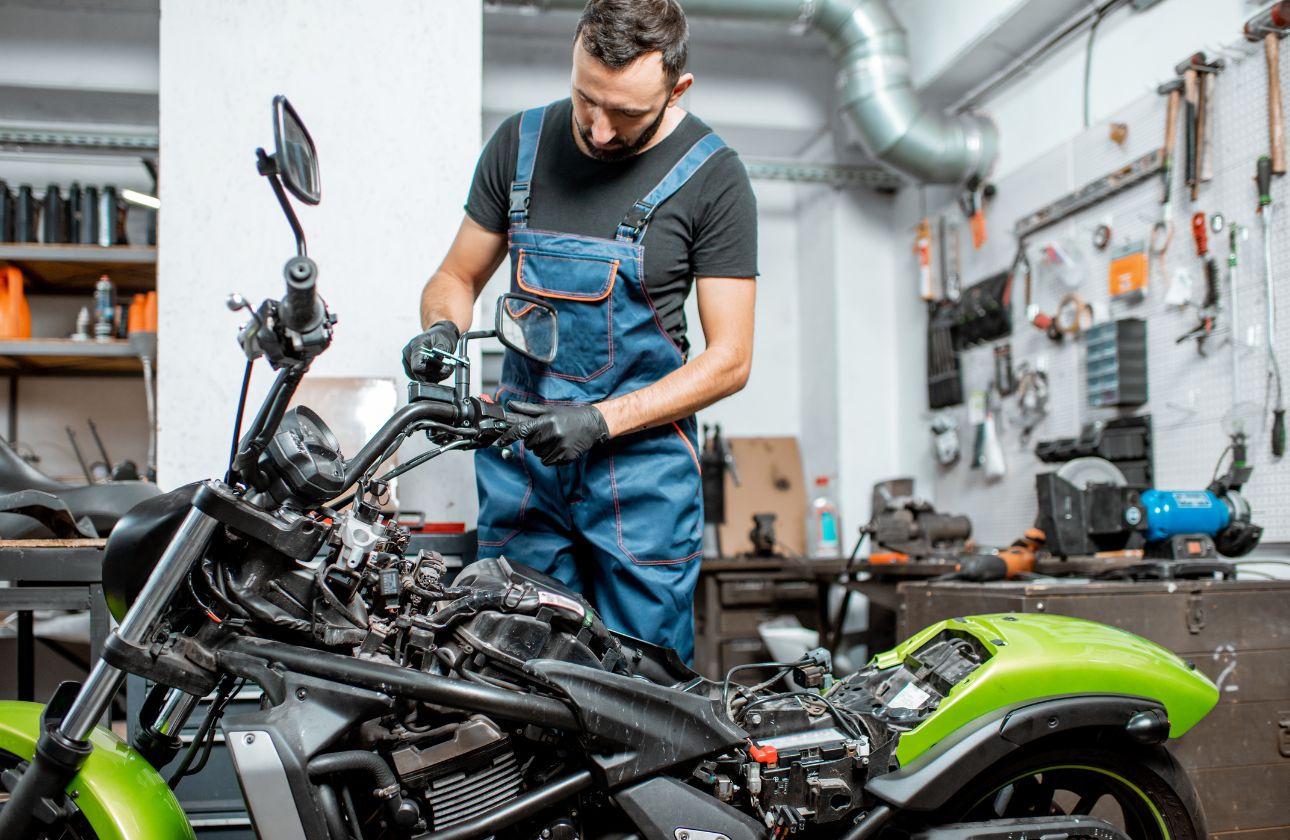The Ultimate Guide to Motorcycle Maintenance
Motorcycles are thrilling machines that offer unparalleled freedom on the road. Whether you're a seasoned rider or a novice, taking good care of your motorcycle is essential to ensure its longevity, performance, and safety. Proper motorcycle maintenance can also help you avoid costly repairs and enhance your riding experience. In this ultimate guide to motorcycle maintenance, we’ll walk you through key aspects of caring for your bike, from basic upkeep to more advanced maintenance tasks.
Regularly Check the Oil
Oil is the lifeblood of your motorcycle's engine, and it plays a crucial role in lubrication, cooling, and cleaning engine components. Regular oil checks and changes are vital to keep your engine running smoothly. Over time, the oil can become dirty and lose its effectiveness, leading to engine wear and potential breakdowns.
Tip: Check the oil level at least once a month and change the oil according to the manufacturer’s recommendation, typically every 3,000 to 5,000 miles, depending on your bike’s model and the type of oil you use.
Maintain the Tires
Your motorcycle's tires are the only point of contact with the road, making them incredibly important for your safety. Regularly inspecting your tires for signs of wear, cracks, or damage is a must. Proper tire maintenance ensures optimal grip, handling, and overall safety.
Tip: Check the tire pressure monthly to ensure it's within the recommended range. Low tire pressure can affect fuel efficiency and handling, while overinflated tires can reduce traction. Don't forget to inspect the tread for wear and replace tires when they get too low.
Clean and Lube the Chain
For chain-driven motorcycles, the chain requires regular cleaning, lubrication, and tension adjustment. A dirty or improperly maintained chain can cause poor performance, increased wear on other components, and a jerky ride.
Tip: Clean the chain every 500 miles or after riding in wet or muddy conditions. Apply chain lube to prevent rusting and to maintain smooth operation. Don’t forget to check the chain tension and adjust it as needed to prevent it from becoming too tight or too loose.
Check and Replace Brake Pads
Brakes are crucial for your safety, and keeping them in good condition should be a top priority. Over time, brake pads wear down and lose their effectiveness, which can lead to longer stopping distances and unsafe riding conditions.
Tip: Inspect the brake pads regularly, especially if you notice any changes in braking performance. If the pads are worn down to less than 1/8 inch, it’s time to replace them. Be sure to check both the front and rear brakes.
Inspect the Battery
A dead battery can quickly put an end to your ride. Batteries can corrode or lose their charge, especially in extreme temperatures. Regularly checking your battery’s condition ensures that you won’t get stranded with a bike that won’t start.
Tip: Inspect the battery terminals for corrosion, and clean them if necessary. Check the battery voltage with a multimeter. If your battery is more than three years old, it might be time to replace it. Also, keep the battery charged during long periods of non-use.
Check the Spark Plugs
Spark plugs play a crucial role in your motorcycle’s engine efficiency. They ignite the air-fuel mixture, allowing the engine to run smoothly. Over time, spark plugs can become fouled with carbon deposits, which can affect performance and fuel efficiency.
Tip: Inspect your spark plugs every 10,000 miles and replace them if they show signs of wear, such as corrosion or buildup. A quick visual inspection can help you spot any issues that may require attention.
Keep the Air Filter Clean
A clean air filter ensures that your engine gets a proper supply of clean air, which is essential for optimal combustion and performance. A clogged or dirty air filter can reduce engine efficiency, decrease power, and increase fuel consumption.
Tip: Check the air filter every 3,000 miles or as recommended by the manufacturer. If the filter is dirty, clean it or replace it. In dusty or off-road conditions, you may need to clean it more frequently.
Lubricate the Cables and Levers
Your motorcycle's control cables, such as the throttle, clutch, and brake cables, are essential for smooth operation. Over time, these cables can become stiff or sticky, making them difficult to operate.
Tip: Lubricate the cables with a suitable lubricant every few months to ensure smooth action. If the cables appear frayed or damaged, replace them immediately to prevent failure while riding.
Regularly Clean Your Motorcycle
Regular cleaning not only keeps your motorcycle looking great, but it also helps prevent dirt, grime, and moisture from building up on crucial components. Clean motorcycles are less prone to rust, wear, and damage.
Tip: Use a soft cloth or sponge with a mild detergent to clean the body, wheels, and engine parts. Avoid using high-pressure washers, as they can force water into sensitive areas, leading to potential electrical issues.
Check the Suspension
The suspension system is essential for providing a comfortable and safe ride. It absorbs shocks from bumps in the road and keeps your motorcycle stable. Over time, suspension components can wear down and need adjustment.
Tip: Inspect the suspension forks and shocks for leaks, signs of wear, or unusual noise. If the suspension feels too soft or too stiff, it may need adjustment or servicing.
Motorcycle maintenance doesn’t have to be overwhelming. By following a regular maintenance schedule and paying attention to key components, you can ensure that your bike runs smoothly, stays safe, and serves you well for many years to come. Whether you're a casual rider or a motorcycle enthusiast, maintaining your bike properly is essential for enjoying your rides to the fullest. Remember, a little effort today can save you a lot of time, money, and hassle in the future.




Comments (0)